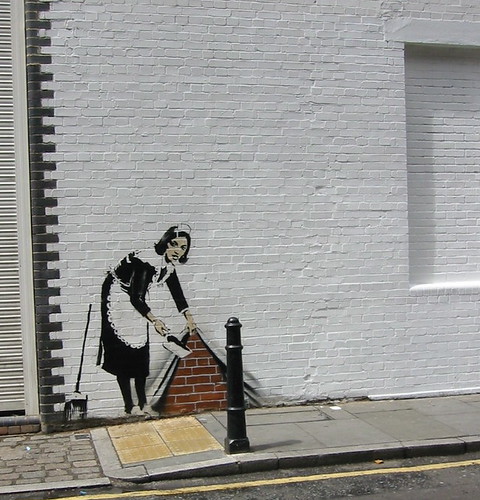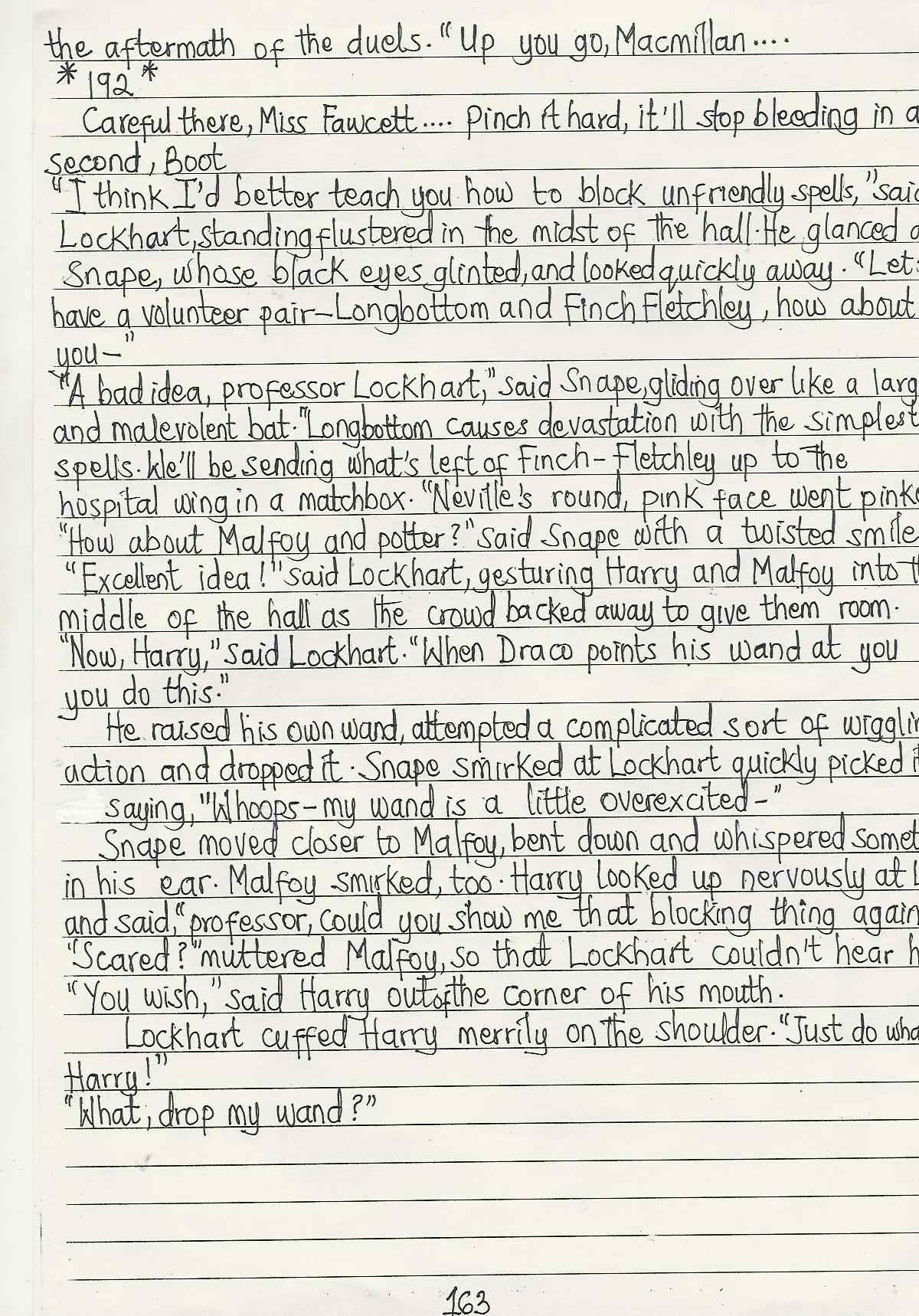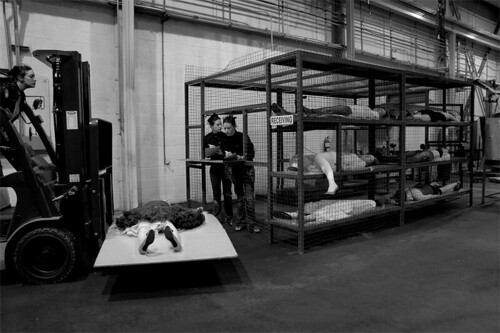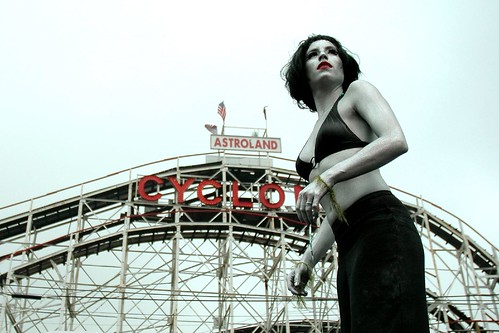ConWorks Homeless:
Knowing that ConWorks is moving dredges up a more difficult question: Is ConWorks worth moving? It seems more like a glorified rental hall than an arts center these days—it lost something when Shiffler left and lost almost everything when Richter left and hasn’t made much of an artistic impression since. A few names have moved through the building, doing performances and art shows, during new artistic director Corey Pearlstein’s tenure—cult names (Negativland, Guillermo Gómez-Peña), local names (Joe Von Appen, Degenerate Art Ensemble), local big names (Trimpin), and local bigger names (Gary Hill)—but they’ve passed through like phantoms, leaving no sense of artistic cohesion or weight. The programming has felt more like a grab bag of phoned-in favors than a multidisciplinary mission. I don’t hear people talking about ConWorks anymore. It’s almost like it’s already gone.
Friday, June 30, 2006
Police Raids Over Jolie-Pitt Baby Shower - TMZ.com
Police Raids Over Jolie-Pitt Baby Shower - TMZ.com:
TMZ has learned the FBI and Massachusetts authorities raided a Westfield, Mass. home Tuesday night and seized photos of a baby shower held by Angelina Jolie and Brad Pitt.
TMZ has learned the FBI and Massachusetts authorities raided a Westfield, Mass. home Tuesday night and seized photos of a baby shower held by Angelina Jolie and Brad Pitt.
Thursday, June 29, 2006
WSJ.com - Directors, Take Note: Samuel Beckett Was A Micromanager

WSJ.com - Directors, Take Note: Samuel Beckett Was A Micromanager:
In the 17 years since Beckett's death, the representatives of his estate have gone to extreme lengths to make sure those instructions are followed to the letter. They close or threaten to close productions that ignore them.
The estate's representatives, headed by Mr. Beckett's nephew, Edward, contend such strict adherence maintains the integrity of the Nobel Prize-winner's more than two dozen plays. Some in the theater say that it deprives directors of so much leeway as to be absurd.
In 1994, the estate canceled the European tour rights of a production of the play "Footfalls" in London because actress Fiona Shaw walked around the stage in a pattern different from what Beckett instructed in the text: to pace "downstage, parallel with front, length nine steps, width one metre, a little off centre audience right." Ms. Shaw also wore a bright red dress instead of the "worn grey wrap hiding feet" that Beckett's stage directions called for. In an email, Edward Beckett confirmed that the production was "curtailed" because "the company had broken the terms of their contract."
In 2003, Edward Beckett threatened to close a production of "Waiting for Godot" in Sydney, Australia, because director Neil Armfield added music to it. But the theater's contract with the estate didn't prohibit music, so the production carried on. "In coming here with its narrow prescription, its dead controlling hand, its list of 'not alloweds,' the Beckett estate seems to me to be the enemy of art," Mr. Armfield railed in a speech he gave the same year in Sydney to a symposium of Beckett scholars.
Supreme Court Blocks Guantánamo Tribunals - New York Times
Supreme Court Blocks Guantánamo Tribunals - New York Times:
The Supreme Court today delivered a sweeping rebuke to the Bush administration, ruling that it exceeded its authority by creating tribunals for terror suspects that fell short of the legal protections that Congress has traditionally required in military courts.
As a result, the court said in a 5-to-3 ruling, the tribunals violated both American military law and the military's obligations under the Geneva Conventions.
The Supreme Court today delivered a sweeping rebuke to the Bush administration, ruling that it exceeded its authority by creating tribunals for terror suspects that fell short of the legal protections that Congress has traditionally required in military courts.
As a result, the court said in a 5-to-3 ruling, the tribunals violated both American military law and the military's obligations under the Geneva Conventions.
Man of Steel, Woman of Kleenex
Man of Steel, Woman of Kleenex:
An unwed Superman is a mobile Superman. Thus it has been alleged that those who chronicle the Man of Steel's adventures are responsible for his condition. But the cartoonists are not to blame.
Nor is Superman handicapped by psychological problems.
Granted that the poor oaf is not entirely sane. How could he be? He is an orphan, a refugee, and an alien. His homeland no longer exists in any form, save for gigatons upon gigatons of dangerous, prettily colored rocks.
As a child and young adult, Kal-El must have been hard put to find an adequate father-figure. What human could control his antisocial behavior? What human would dare try to punish him? His actual, highly social behavior during this period indicates an inhuman self-restraint.
What wonder if Superman drifted gradually into schizophrenia? Torn between his human and kryptonian identities, he chose to be both, keeping his split personalities rigidly separate. A psychotic desperation is evident in his defense of his "secret identity."
But Superman's sex problems are strictly physiological, and quite real.
The purpose of this article is to point out some medical drawbacks to being a kryptonian among human beings, and to suggest possible solutions. The kryptonian humanoid must not be allowed to go the way of the pterodactyl and the passenger pigeon.
An unwed Superman is a mobile Superman. Thus it has been alleged that those who chronicle the Man of Steel's adventures are responsible for his condition. But the cartoonists are not to blame.
Nor is Superman handicapped by psychological problems.
Granted that the poor oaf is not entirely sane. How could he be? He is an orphan, a refugee, and an alien. His homeland no longer exists in any form, save for gigatons upon gigatons of dangerous, prettily colored rocks.
As a child and young adult, Kal-El must have been hard put to find an adequate father-figure. What human could control his antisocial behavior? What human would dare try to punish him? His actual, highly social behavior during this period indicates an inhuman self-restraint.
What wonder if Superman drifted gradually into schizophrenia? Torn between his human and kryptonian identities, he chose to be both, keeping his split personalities rigidly separate. A psychotic desperation is evident in his defense of his "secret identity."
But Superman's sex problems are strictly physiological, and quite real.
The purpose of this article is to point out some medical drawbacks to being a kryptonian among human beings, and to suggest possible solutions. The kryptonian humanoid must not be allowed to go the way of the pterodactyl and the passenger pigeon.
rm -r *, by Jeffrey Veen
rm -r *, by Jeffrey Veen:
I was waiting for a friend in the lobby of the Hilton down at Union Square. Near me was a middle-aged woman speaking loudly into a pay phone.
"Yes, yes, that's right. You've got it. Now, here's what I want you to type. 'are em' ... yes. The letter 'r' and the letter 'm', together. Now type a dash. Yes, like a hyphen. OK, and then another 'r'. Yes rm space hyphen r. OK, now another space and then a star. Shift 8. Yes. Now read it back to me. [pause] OK perfect. Hit return and tell me what happens. [pause] [pause] OK. Thank you. Goodbye."
And she hung up and walked away while the command-line geek inside of me stood paralyzed with fear.
I was waiting for a friend in the lobby of the Hilton down at Union Square. Near me was a middle-aged woman speaking loudly into a pay phone.
"Yes, yes, that's right. You've got it. Now, here's what I want you to type. 'are em' ... yes. The letter 'r' and the letter 'm', together. Now type a dash. Yes, like a hyphen. OK, and then another 'r'. Yes rm space hyphen r. OK, now another space and then a star. Shift 8. Yes. Now read it back to me. [pause] OK perfect. Hit return and tell me what happens. [pause] [pause] OK. Thank you. Goodbye."
And she hung up and walked away while the command-line geek inside of me stood paralyzed with fear.
A History of Hurricanes in New York
A History of Hurricanes in New York:
But our own hurricane history is more tumultuous than many New Yorkers might think. In 1821, when a major hurricane made a direct hit on Manhattan, stunned residents recorded sea levels rising as fast as thirteen feet in a single hour down where there’s now Battery Park City. Everything was flooded south of Canal Street. The storm struck at low tide, though, and, according to Queens College professor Nicholas Coch, a coastal geologist who calls himself a “forensic hurricanologist,” that’s “the only thing that saved the city.”
Then there’s Hog Island. The pig-shaped mile-long barrier island was off the southern coast of the Rockaways. After the Civil War, developers built saloons and bathhouses on it, and Hog Island became a Gilded Age version of the Hamptons. The city’s political bosses and business elite used the place as a kind of beachy annex of Tammany Hall. That all ended on the night of August 23, 1893, when a terrifying Category 2 hurricane made landfall on the swamp that is now JFK airport.
The hurricane was a major event. All six front-page columns of the August 25, 1893, New York Times were dedicated to the “unexampled fury” of the “West Indian monster.” The storm sunk dozens of boats and killed scores of sailors. In Central Park, hundreds of trees were uprooted, and gangs of Italian immigrant boys “roamed . . . in the early hours of the morning collecting the dead sparrows and plucking them of their feathers.” Apparently looting was not yet in vogue. The brand-new Metropolitan Life building on Madison Avenue was severely damaged. And a 30-foot storm surge swept across southern Brooklyn and Queens, destroying virtually every man-made structure in its path. These days, evacuation plans are in place, officials said last week. But “try to tell someone in Sheepshead Bay that they have to evacuate immediately because within the next 24 hours they’ll have 30 feet of storm surge,” says Mike Lee, director of Watch Command at the New York City Office of Emergency Management. “They’ll laugh at you. I mean, I barely even believe it.”
As for Hog Island, “it largely disappeared that night,” Coch says. “As far as I know, it is the only incidence of the removal of an entire island by a hurricane.”
But our own hurricane history is more tumultuous than many New Yorkers might think. In 1821, when a major hurricane made a direct hit on Manhattan, stunned residents recorded sea levels rising as fast as thirteen feet in a single hour down where there’s now Battery Park City. Everything was flooded south of Canal Street. The storm struck at low tide, though, and, according to Queens College professor Nicholas Coch, a coastal geologist who calls himself a “forensic hurricanologist,” that’s “the only thing that saved the city.”
Then there’s Hog Island. The pig-shaped mile-long barrier island was off the southern coast of the Rockaways. After the Civil War, developers built saloons and bathhouses on it, and Hog Island became a Gilded Age version of the Hamptons. The city’s political bosses and business elite used the place as a kind of beachy annex of Tammany Hall. That all ended on the night of August 23, 1893, when a terrifying Category 2 hurricane made landfall on the swamp that is now JFK airport.
The hurricane was a major event. All six front-page columns of the August 25, 1893, New York Times were dedicated to the “unexampled fury” of the “West Indian monster.” The storm sunk dozens of boats and killed scores of sailors. In Central Park, hundreds of trees were uprooted, and gangs of Italian immigrant boys “roamed . . . in the early hours of the morning collecting the dead sparrows and plucking them of their feathers.” Apparently looting was not yet in vogue. The brand-new Metropolitan Life building on Madison Avenue was severely damaged. And a 30-foot storm surge swept across southern Brooklyn and Queens, destroying virtually every man-made structure in its path. These days, evacuation plans are in place, officials said last week. But “try to tell someone in Sheepshead Bay that they have to evacuate immediately because within the next 24 hours they’ll have 30 feet of storm surge,” says Mike Lee, director of Watch Command at the New York City Office of Emergency Management. “They’ll laugh at you. I mean, I barely even believe it.”
As for Hog Island, “it largely disappeared that night,” Coch says. “As far as I know, it is the only incidence of the removal of an entire island by a hurricane.”
Wednesday, June 28, 2006
Read
The United States Patent Office explains it all for you:
Looking back from the 22nd century, future historians will marvel at the current era's obsession with extending intellectual property rights well past any reasonable limit. Nowhere is this more apparent than in the United States Patent and Trademark Office's determination to grant a patent to even the most absurd claims that cross its desk. Four years ago a patent attorney in Minnesota named Peter Olson demonstrated this by submitting the following patent in the name of his five year-old son, Steven. The patent was granted. Read it and weep.
How to Succeed in Business Without Really Dieting (Seattle Weekly)
How to Succeed in Business Without Really Dieting:
But the movie's problem comes down to this: It's about the wrong girl. English actress Emily Blunt (the haughty seducer in My Summer of Love) plays Hathaway's rival, Emily, jealously guarding her status as Miranda's No. 1 assistant, scornful of the rube destined to replace her. Only Blunt seems to understand what Devil should've been—an enjoyable Bridget Jones knockoff. She sees, as we do, that Andy can't lose, and her panic only causes her to make a bigger mess of things. Which is why we rooted for Bridget, and her unlikely success raised a cheer. Starving herself for fashion, a young woman about to be replaced by this year's model, Emily moans at her desk, "I love my job, I love my job," like she's got a terminal disease. Viewers will know the feeling—it's called work, which Devil isn't prepared to do.
But the movie's problem comes down to this: It's about the wrong girl. English actress Emily Blunt (the haughty seducer in My Summer of Love) plays Hathaway's rival, Emily, jealously guarding her status as Miranda's No. 1 assistant, scornful of the rube destined to replace her. Only Blunt seems to understand what Devil should've been—an enjoyable Bridget Jones knockoff. She sees, as we do, that Andy can't lose, and her panic only causes her to make a bigger mess of things. Which is why we rooted for Bridget, and her unlikely success raised a cheer. Starving herself for fashion, a young woman about to be replaced by this year's model, Emily moans at her desk, "I love my job, I love my job," like she's got a terminal disease. Viewers will know the feeling—it's called work, which Devil isn't prepared to do.
Urban Fairies fairy doors Locations

Urban Fairies fairy doors:
The town of Ann Arbour, Michigan is filled with tiny little fairy doors that have been built into the buildings. Some houses also have tiny staircases, tiny windows with tiny drapes...it's crazy wonderful.
Tuesday, June 27, 2006
MAKE: Blog: Animatronic flesh shoe

MAKE: Blog: Animatronic flesh shoe:
"The shoe is stitched together with multiple pieces of latex rubber cast out of moulds made from my own skin. The shoe's toe and heel raise and lower as it occasionally vibrates/pulsates, and twitches on the floor as if it were still alive. The movement is not constant, and usually causes people to jump back while they are in the middle of leaning in for a closer look."
Maud Newton: Blog
Maud Newton: Blog:
But by my 30s, those memories had started to fade. What I was left with was a memory of what my memory used to be like, a poignant awareness of my own deficit. I first noticed this about eight years ago: One day, rooting through a drawer in my mom’s house, I came across a photo of myself as a girl. In the photo, I’m about 5 years old, decked out in a swami robe, my eyes hidden behind enormous Jackie O sunglasses. But I could summon no memory of that day, no explanation, though I had the conviction that I used to know what that picture was all about, that there was some important story connected with it. It felt like I had lost a key that unlocked some inner door. I could still press my ear to it, could still run my hand against its grain and examine its hinges, but I would never get through that door again.
And so I began my novel about memory. I knew at the time that several companies, including one appropriately called Memory Pharmaceuticals, were working to develop real treatments for memory loss, but I didn’t pay them much mind. My drug would be different. It would be recreational-Proust’s madeleine reduced to tiny chemical specks. My drug would launch the user into the best moments of his life, allowing him to savor long ago joys, allowing him to meet his boyhood self....
[I]n the course of writing the novel, I saw just how dangerous this drug might be. The past is potently intoxicating, and if we could ever taste it purely, undiluted by forgetfulness, we would, I came to believe, disappear into ourselves.
But by my 30s, those memories had started to fade. What I was left with was a memory of what my memory used to be like, a poignant awareness of my own deficit. I first noticed this about eight years ago: One day, rooting through a drawer in my mom’s house, I came across a photo of myself as a girl. In the photo, I’m about 5 years old, decked out in a swami robe, my eyes hidden behind enormous Jackie O sunglasses. But I could summon no memory of that day, no explanation, though I had the conviction that I used to know what that picture was all about, that there was some important story connected with it. It felt like I had lost a key that unlocked some inner door. I could still press my ear to it, could still run my hand against its grain and examine its hinges, but I would never get through that door again.
And so I began my novel about memory. I knew at the time that several companies, including one appropriately called Memory Pharmaceuticals, were working to develop real treatments for memory loss, but I didn’t pay them much mind. My drug would be different. It would be recreational-Proust’s madeleine reduced to tiny chemical specks. My drug would launch the user into the best moments of his life, allowing him to savor long ago joys, allowing him to meet his boyhood self....
[I]n the course of writing the novel, I saw just how dangerous this drug might be. The past is potently intoxicating, and if we could ever taste it purely, undiluted by forgetfulness, we would, I came to believe, disappear into ourselves.
Renewed Push for the Artistic ABC's in N.Y. - New York Times
Renewed Push for the Artistic ABC's in N.Y. - New York Times:
But there's still a long way to go. Student-teacher ratios for the arts can be staggering. According to data provided by the department to the City Council this fall, there is 1 visual arts teacher for every 943 students and 1 music teacher for every 1,200. For dance and theater the numbers are even more extreme, with 1 dance teacher for every 8,088 students, and 1 theater teacher for every 8,871.
But there's still a long way to go. Student-teacher ratios for the arts can be staggering. According to data provided by the department to the City Council this fall, there is 1 visual arts teacher for every 943 students and 1 music teacher for every 1,200. For dance and theater the numbers are even more extreme, with 1 dance teacher for every 8,088 students, and 1 theater teacher for every 8,871.
Monday, June 26, 2006
The New Yorker: The Critics: The Current Cinema
The New Yorker: The Critics: Superman Returns:
I have listened to Batman moan about how he will never fit in, and to countless mutants voice the same complaint, and, frankly, I don’t give a damn. The ethical duties of Superman leave me cold; I just want to watch him catch a falling car.
I have listened to Batman moan about how he will never fit in, and to countless mutants voice the same complaint, and, frankly, I don’t give a damn. The ethical duties of Superman leave me cold; I just want to watch him catch a falling car.
Boing Boing: Residents sell blank CDs
Boing Boing: Residents sell blank CDs:
The anonymous surrealist art/performance group The Residents is selling a double-CD package, titled River Of Crime, for $14.99. The two disks inside are blank. The recordings, inspired by old-timey radio serials, and other multimedia material will be released online every other week throughout the summer for download by those who have the digital subscription code inside the CD-R package. Once the whole collection of "Crimecasts" are downloaded, the owner is meant to complete the package by burning the disks. From the project description:
THE RESIDENTS’ RIVER OF CRIME is a character driven podcast series of 20 shows, based on the time honored concept of TRUE CRIME. Rooted in 1940’s style radio drama, THE RIVER OF CRIME not only updates the original form with modern production values, but also heavily leans on a distinctive soundtrack as one of its primary dramatic devices. A modern day DRAGNET, the series follows the reminisces of its unseen narrator as he discloses a lifelong obsession with wickedness and vice. But, as opposed to the ironic and terse Joe Friday, a classic crime solver, THE RIVER OF CRIME’S narrator is a crime collector.
The anonymous surrealist art/performance group The Residents is selling a double-CD package, titled River Of Crime, for $14.99. The two disks inside are blank. The recordings, inspired by old-timey radio serials, and other multimedia material will be released online every other week throughout the summer for download by those who have the digital subscription code inside the CD-R package. Once the whole collection of "Crimecasts" are downloaded, the owner is meant to complete the package by burning the disks. From the project description:
THE RESIDENTS’ RIVER OF CRIME is a character driven podcast series of 20 shows, based on the time honored concept of TRUE CRIME. Rooted in 1940’s style radio drama, THE RIVER OF CRIME not only updates the original form with modern production values, but also heavily leans on a distinctive soundtrack as one of its primary dramatic devices. A modern day DRAGNET, the series follows the reminisces of its unseen narrator as he discloses a lifelong obsession with wickedness and vice. But, as opposed to the ironic and terse Joe Friday, a classic crime solver, THE RIVER OF CRIME’S narrator is a crime collector.
Shaw, Kabuki, Eva Peron: The Usual Mix - New York Times
Shaw, Kabuki, Eva Peron: The Usual Mix - New York Times:
"I like being part of a collective that completely subverts all my usual ways of approaching a play," said Ms. Schreck, who played the title role in "Major Barbara." "With 2HC I've found a sense of freedom in performing that I hadn't felt since I was a child. It's thrilling to be allowed to go so outrageously far — physically, vocally, interpretively — to test the boundaries of what the play can contain. Brendan and Brooke's shows are uniquely alive because of this, because everyone is putting so much on the line. We are aggressively risking making fools of ourselves. It's delicious. There's joy in it, and humility. It's fun."
"I like being part of a collective that completely subverts all my usual ways of approaching a play," said Ms. Schreck, who played the title role in "Major Barbara." "With 2HC I've found a sense of freedom in performing that I hadn't felt since I was a child. It's thrilling to be allowed to go so outrageously far — physically, vocally, interpretively — to test the boundaries of what the play can contain. Brendan and Brooke's shows are uniquely alive because of this, because everyone is putting so much on the line. We are aggressively risking making fools of ourselves. It's delicious. There's joy in it, and humility. It's fun."















































